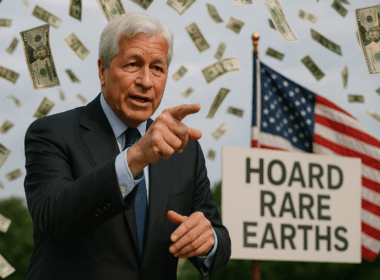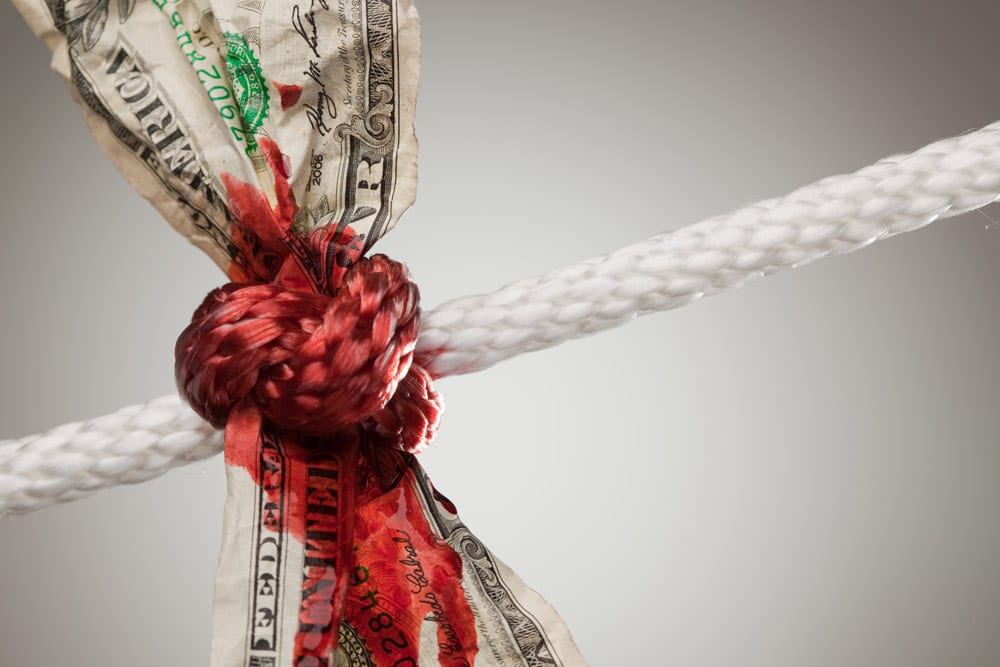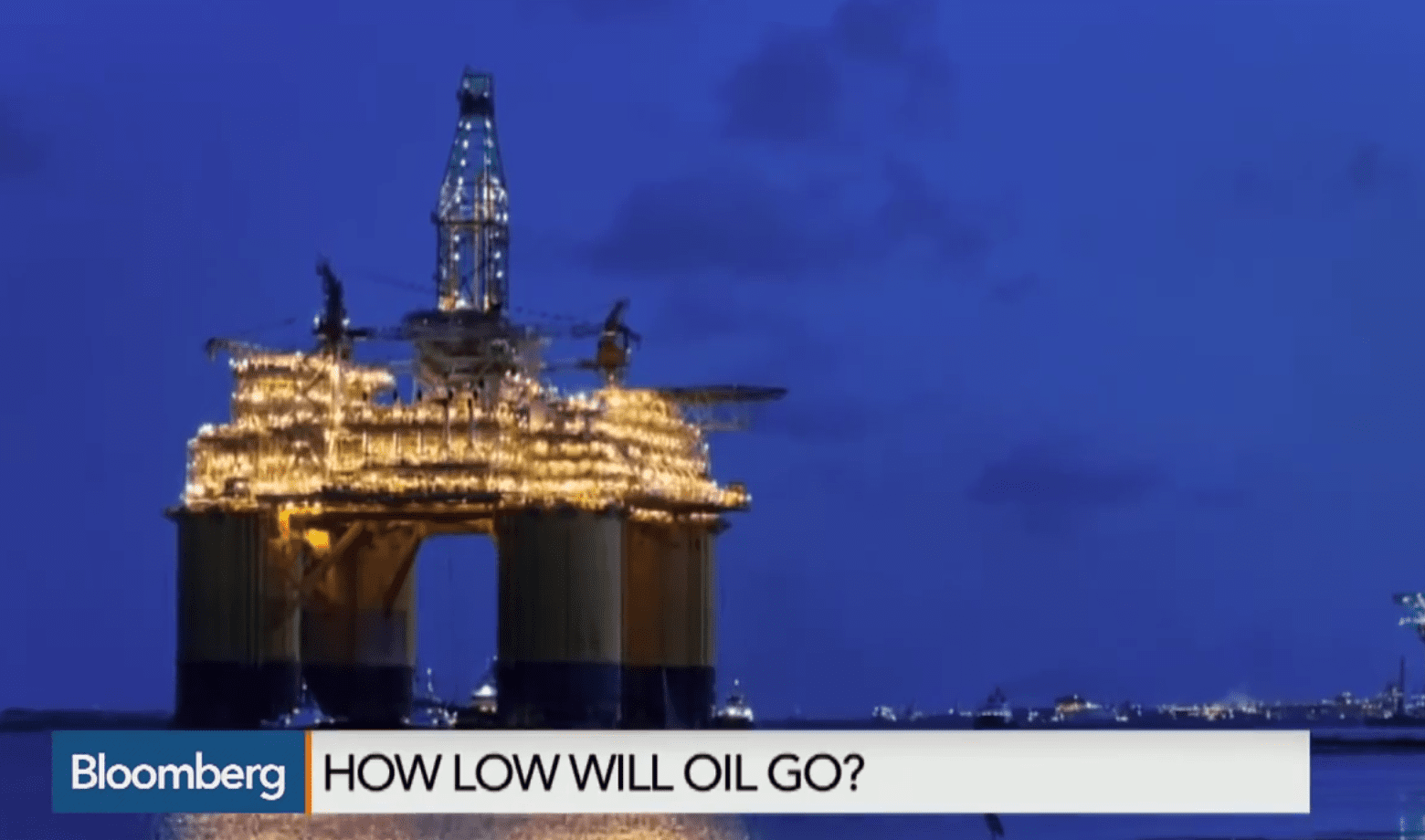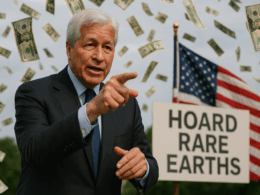Dear Readers,
This week, I want to tell you the reason why inflation hasn’t yet spiraled out of control – the REAL reason.
Over the past years, I have written about the manipulation of resources, money, and financial assets. As an old saying by a famous banker goes, and slightly revised for the purpose of this Letter, “he who controls the money supply controls everything.”
It is with that I want to revisit the idea of how money is used to manipulate and control the world’s real assets – keeping in mind throughout this Letter that money currency is only worth what we perceive it to be worth.
Over the past decade, economists and experts have called for inflation because of the record increase in the money supply combined with record-low interest rates. The idea behind their call was simple: an increase in the money supply should lead to inflation because more money is created than output is produced, which causes things to become more expensive relative to currency.
And throughout history, an increase in money supply did indeed cause inflation; we witnessed this many times going back to the days of yore. As a matter of fact, debasement through increases in the money supply has led almost every currency in history to failure.
So it’s no wonder why economists and experts have relied on the many instances throughout history – going back thousands of years – to draw the conclusion that a meteoric rise in inflation will occur indefinitely. But they have been making this call since post-2008, and we have yet to see it happen.
Why? How could thousands of years of data prove to be so wrong?
Bernanke Was…Right?
Modern day theorists attribute the lack of inflation to the decline in the velocity of money (which I have written about many times before); or simply stated, the increase in the money supply hasn’t led to an increase in consumers spending. Others say that QE only increases the Fed’s balance sheet, but does not affect consumers.
You can find numerous theories and hundred-page reports online on why runaway inflation hasn’t occurred since 2008. But most of the theories are merely a distraction from the truth on why runaway inflation has not occurred.
Yet, the truth is right in front of us.
And believe it or not, Bernanke explained it best a few years ago when he explained that QE is not inflationary, but simply just an asset swap.
Now before you criticize, give me time to explain.
The Fed’s Mandate
For years, I have explained how central banks have seized control of the world. They literally own everything. And sitting at the top is the king of all banks, the Federal Reserve.
As the head honcho, the Federal Reserve System has three primary responsibilities (according to the Fed itself):
- Conducting monetary policy
- Supervising and regulating banking institutions
- Providing payments services to banking institutions.
“Economic conditions in the US and worldwide depend on how well the Fed does its job, and that affects everyone.”
In simpler words, the Fed oversees every financial transaction, controls interest rates, controls every bank, and controls liquidity and the money supply.
It controls everything.
Learning the Hard Way
Throughout its 100-year history, the Fed has learned that when it increases the money supply, inflation occurs very rapidly; vice versa, the Fed has always known that decreasing the money supply leads to deflation very rapidly (one could argue that was how the Fed maintained control throughout history.)
Shortly after its official inception in 1913, the Fed began to intervene by increasing the money supply as a result of the financing requirements of World War I.
During the first two years under Fed control, inflation averaged 1%. By the third year, it had reached 7.9%; by the fourth year, 17.4%; fifth year, 18%; sixth year, 14.6; and seventh year, 15.6%.
Coincidentally – or not – according to the National Bureau of Economic Research, 20% of the total cost to the US of the war was financed through money creation – roughly the amount of inflation that took place during that time.
After seven years, inflation reversed course with the US having fallen into a deep depression.
Over the next decade, inflation remained subdued. That is, until World War II.
Via Worldpress.org:
“During and immediately after World War II, the Fed maintained extremely low interest rates in order to reduce war-financing costs for the government. As these policies became unnecessary and inflationary after the war, the Fed was compelled by the Treasury to maintain the low cost of debt. The result of this highly accommodating monetary policy was 14 percent inflation in 1947 and rising unemployment that persisted into the early 1950s.”
(Note that the above historical events are very similar to what is happening today, with the exception of high inflation.)
Then came the end of the Bretton Woods system, when gold’s link was removed from the US dollar, effectively giving the Fed the ability to increase the money supply at will. And that is what the Fed did.The Fed’s actions immediately resulted in, and directly affected, inflation – as increasing the money supply always has – leading to the great inflation of the 1970’s.
Unavoidable Consequences?
In its own words, the Fed manages monetary policy to promote a healthy economy by keeping prices stable and supporting a high level of employment. It attempts to do this through inflation targeting.
Since its inception, the Fed has attempted to keep prices stable while increasing the money supply. That’s because, as I mentioned many times before, the more the Fed can lend the US (money printing), the more control it will have over the country.
Via my past Letter:
“…the Fed works only to pursue its own growth; to engulf more of society into its banking system.”
But throughout the three historical examples – WWI, WWII, and the end of Bretton Woods – the Fed has not been able to keep inflation subdued when money was created – just as every nation or bank has not been able to do in the past.
That is, up until the last twenty years.
And that is where modern day financial science comes into play…
Let me explain.
The Truth About Why There is No Inflation
Increasing the money supply has always led to an immediate and noticeable increase in inflation.
But since 1991, US inflation has never been above 4% – despite record amounts of monetary injections.
As a matter of fact, since the end of the Bretton Woods system, inflation under 3% was a rare occurrence, happening only once in 1986.
That is, up until 1993.
The Fed Learns Price Control: Inflation Targeting
After 1993, things changed dramatically; annual average inflation over 4% never happened again. But how?
How was the Fed able to come close to target a rate of 2% inflation, despite record-low interest rates and dramatic increases in the money supply?
How was the Fed able to achieve this feat when every one before has failed?
In January of 1993, the first ETF began trading (along with regulatory exemptions for by the Commodity Futures Trading Commission on certain swaps and hybrid instruments).
At first, it was the S&P 500 Depository Receipt, or what we know as the SPDR. But then came others. Lots of them.
In less than ten years, the ETF market grew from one fund in 1993, to more than 100 funds by 2002. Today, there are over 1000 ETF funds, many of which are directly related to the price of resources and commodities.
Everything from gold, oil, gas, copper, aluminum, wheat, grains, sugar, cotton, and even livestock, can now be traded via ETF’s instead of a futures contract.
ETF vs. Futures
Unlike buying a futures contract, which gives you a direct right to the underlying commodity at a fixed price (which is delivered but paid for later), buying shares in an ETF means you own shares in the ETF fund, and not the underlying commodity that the ETF tracks.
While an ETF fund generally* has to own the underlying commodity that it tracks, shareholders of ETF shares do not directly own or have any direct claim to the underlying investments in the fund; rather they indirectly own these assets.
(*I use the word generally because there have been many reports that many of the ETF funds don’t actually have the amount of resources they claim to have. See my Letter, “How Non-Existent Metals are Used as Collateral to Borrow Money.“)
In simple terms, a futures contract is direct ownership, whereas an ETF share is not.
That means it’s much easier to manipulate prices through an ETF than it is through a futures contract.
Why?
Because a futures contract is a contract between a buyer and a seller that has to be delivered*; an ETF, on the other hand, doesn’t rely on an agreement by two parties, and nothing has to be delivered – except for cash.(*This is how resource producers, such as oil and gold companies, hedge their production. They lock in a future selling price for their ongoing production that is only ready for sale sometime in the future. When that contract is up for delivery, the producers deliver physical product to the buyer of that contract.)
That means if you have enough cash, you could very easily manipulate the price of an ETF since there’s no physical delivery or contract obligation to another party except for cash itself.
Again, you may be thinking, “If an ETF tracks the price of a commodity, than the ETF has to reflect the value of that commodity and not the other way around.”
For the most part, you would be correct. But keep in mind that the financial market and true price discovery is about perception, just as money is worth what we perceive it to be worth.
Take, for example, gold.
If the Fed were to announce tomorrow that it “may” pursue another round of QE, gold would likely immediately rise – even if the Fed did not actually end up pursuing another round. The perception that QE would lead to dollar devaluation is what causes gold to rise in this scenario.
Given the size of the ETF market, ETF’s have become a recognizable standard in price discovery because many investors often perceive ETF share prices as spot prices for many commodities.
As a result, a selloff in, say, the GLD (the biggest ETF gold fund) could easily lead to a sell-off in paper gold in other global markets.
How the Fed Can Indirectly Manipulate Prices
Through ETF’s and other financial instruments (derivatives), the Fed has found a way to stabilize the price while creating more money than ever. This money has flowed not to the people of America, but the people who control America: the bankers, large corporations, and the ultra wealthy.
For years I have said that the majority of liquidity injections will go into the financial markets, which is why I have predicted that the stock market would continue to rise until the injections run dry.
There have been record amounts of liquidity injections – injections that can’t directly stimulate the economy because they are merely asset swaps. And we have had record-low interest rates for nearly a decade. Yet, inflation has remained subdued.How?
Remember, ETF’s require no physical delivery of the underlying commodity that it tracks. The only thing being transacted is cash. If someone had enough cash, they could use that cash to manipulate the prices of commodities through ETFs. In turn, the change in commodity prices would affect the things covered in the Consumer Price Index.
Do you think commodity prices are being manipulated through ETFs?
CLICK HERE to Share Your Thoughts
I have already written many times before on how the market is rigged and how the Fed has managed to infiltrate the stock market.
Here’s one example from last year, Via “How the Fed Influences the Stock Market“:
“Since Fed policy dictates that it cannot directly buy stocks, the Fed has found other ways to encourage people to take risks.
…One of these strategies is to force banks to lend.
The problem, however, is that it’s difficult for banks to lend to unqualified borrowers. And since the majority of Americans have been terribly affected by the economic crisis, many of them don’t meet the requirements for borrowing.
With so much stimulus, where has all the money gone?
To the people who meet the requirements: big corporations with cash.
Remember a while back when I talked about the record amount of cash hoarding by big corporations and how they weren’t using it for capital investments (hiring, infrastructure, etc.) because the economy didn’t warrant such actions?
So what do you do when you have so much cash, but nowhere to deploy it?
Invest in the stock market…simple!
Since spending didn’t make sense for these corporations, as the economy truly didn’t warrant further hiring or sales, these companies decided to buy a record amount of their own stock with their cash pile.
When a company issues a share buyback, the amount of outstanding shares in a company decreases. This leads to a higher Earnings Per Share (EPS), which makes the stock look much more attractive. This, of course, leads to higher share prices.
While this is great for shareholders, its bad for the economy as the cash is no longer put to use to hire new employees or grow the company.
Share buybacks continue at record pace, and I expect billions of dollars in transactions over the next few months alone.
But there’s even more to this story than what the face value suggests.
While the headlines tell us of record cash holdings at corporations (giving the illusion sales are great), what they don’t tell us is that US corporate cash holdings are at the lowest level relative to corporate debt.
That’s because banks – as I just mentioned – have had to lend record amounts of money out. And since many consumers no longer qualify to buy houses or take out other loans, the majority of this lending has gone to big corporations.”
And of course, much of the Fed’s injections have also been given to big investment banks that have poured it into the market by creating and trading ETFs.
This trend hasn’t stopped.
Institutional investors’ appetite for ETF funds continues to grow at a rapid pace.
Via Investment News:
“ETF usage overall is definitely being driven in large part by institutions,” said Justin R. White, a partner with money manager consultant Casey Quirk & Associates. “Many are using them to gain exposure in places they haven’t been exposed to before.”
Mr. White noted institutional investors appreciate ETFs’ “ability to quickly access exposure to an index or commodity that’s not easily investible.”
… The new entrants have some catching up to do. Data from ETF.com show that as of Aug. 17, the top three ETF providers – BlackRock Inc., Vanguard Group Inc. and State Street Global Advisors – account for 66% of the market, with a combined total of $1.71 trillion in ETFs.
A recent Pensions & Investments survey showed that 34% of officials at defined benefit plans, foundations and endowments say they use ETFs or exchange-traded notes. Of those, 25% said they plan to increase their usage. About 14% of non-users surveyed said it’s “somewhat likely” they would begin to invest via ETFs or ETNs within the next year.
Another report, released by PricewaterhouseCoopers in January, found the total ETF market is predicted to grow 6% per year, hitting $5 trillion by 2020 from the current $2.6 trillion.”
That’s right, the ETF market alone is already worth nearly $3 trillion.
But there’s more.
High-Frequency Manipulation
This is yet another subject I have written about many times before. In particular, I have discussed how it can be used to manipulate the market.
And many of the HFT’s are now trading directly in commodity-based ETF’s.
A few years ago, a report was published describing just this.
Via Reuters:
“High-frequency traders have caused U.S. commodity futures prices to disconnect from market fundamentals of supply and demand since the 2008 financial crisis, according to one of the authors of a forthcoming U.N. report.*
…An increasingly high correlation between commodities and equities, caused largely by high-frequency traders, means that prices for oil and other U.S.-traded contracts are more exposed to “sudden and sharp corrections”, said a draft report seen by Reuters.
The study suggests that these players have penetrated deeply into energy and agricultural markets with the growth of electronic trading.”
(*I’ve read the full report years ago, but you can find it here if you haven’t see it: https://mpra.ub.uni-muenchen.de/37486/1/MPRA_paper_37486.pdf“
Last year in May, via USA Today:
“Senators are fearful that high-frequency traders are getting an unfair advantage and endangering the stability of the U.S. futures market, the financial exchange for trades of commodities like corn and gold.”
Then a few months later, a high-frequency trader was charged with manipulating the prices of futures contracts.
“A high-frequency trader has been charged with manipulating the prices of futures contracts, in what the government said was the first criminal case to be brought under new rules against abusive trading.
A federal grand jury charged Michael J. Coscia, the founder of Panther Energy Trading, with six counts of commodities fraud and six counts of “spoofing,” the illegal trading practice of quickly placing and then canceling orders to send a false impression to the market, federal prosecutors said on Thursday. He made nearly $1.6 million in profit through the trades, according to the indictment, which was filed in Federal District Court in Chicago.”
The article also gives a very simplified report on how an algo-trader can easily manipulate the price of a commodity:
“His computer-driven strategy, as described by the government, was to enter large orders with the intent to cancel them before they could be executed. These orders would cause other traders to think the price of a particular contract was moving higher, in the case of a buy order, or lower, in the case of a sell order. Mr. Coscia would take advantage of the market reaction by entering orders to sell at the higher price or buy at the lower price, while canceling the bogus orders, according to the government.
At one point in September 2011, for example, Mr. Coscia entered a buy order in a European currency market at a price that was lower than any offer in the market, according to the indictment. About 11 milliseconds later, he entered three large sell orders, and market prices fell, the indictment says, allowing his original buy order to be filled. He then canceled the large sell orders.
Mr. Coscia then repeated the scheme in the opposite direction, entering sell orders at a price higher than any bid in the market, and then entering buy orders intended to drive the price upward, the indictment says.”
Here is the actual FBI case if you want to learn more: https://www.fbi.gov/chicago/press-releases/2014/high-frequency-trader-indicted-for-manipulating-commodities-futures-markets-in-first-federal-prosecution-for-spoofing
In China, the same thing is happening.
Via Bloomberg:
“China’s probe of algorithmic trading in the stock market has done nothing to dissuade high-frequency traders from using the nation’s burgeoning commodities exchanges.
Virtu Financial Inc., one of the world’s biggest high-speed firms, said on Wednesday it has started buying and selling commodities listed in mainland China.”
Now imagine if that same strategy was used by even bigger banks with access to billions upon billions of dollars – much of it injected into their system by the Fed.
I have already talked about the growing number of algo-trading platforms that have been funded by the world’s biggest investment banks such as Goldman Sachs.
Furthermore, many banks – including JP Morgan (see Commodities Manipulation Revealed) – throughout the years have sought to control the price of commodities by hoarding them.
If we know that the Fed controls every bank, banks that have been accused of hoarding resources and price manipulation and banks who control many HFT firms, could they not all be manipulating prices together to tame inflation caused by increasing the money supply?
How else could it be that since 1993, when ETFs were created and the futures market further deregulated (coincidentally, it was the 1990’s where we also witnessed the first forms of HFT), that inflation – for the first time in history – hasn’t really jumped despite record amounts of money creation?You tell me.
Seek the Truth,
Ivan Lo
The Equedia Letter













This fits in with my own observations that money is being hoarded while financial policies continue to pretend that it moves throughout the economy, and (2) that people no longer make money from producing things, but rather from moving money around independent of any buying or selling of products. It doesn’t much matter whether more dollars should raise the price of things, since “money” is independent of “products” and work. This leads to more and more people being ambivalent about working in productive jobs, which eventually will produce real shortages in goods. Prices may or may not react—if the people who have all the money have enough, it probably won’t have much impact….
The overlooked inflation never mentioned is in packaging. Take grocery items, several years ago most frozen vegetables were sold in 16 oz bags where today they are sold in so called convenience cook in 10, 12 or 14 oz bags. Cookies that were sold in 1 lb packages now are in 12-14 oz packages even Walmart packaging that once came in 17 oz packages and a bit cheaper to get your dollar have dropped to 15 oz sizes. I can remember when ice cream was almost always in 2 qt packages and today they are 1.5 oz to an occasional 1.75 oz package. The smaller packaging did not equal smaller prices which can and are creeping ahead once again 2 to 8 cents every several months.
There are many more examples however you can get the point w/ these.
ETF – ETN – HFM – HFT -QE – SPOOFING – ALGO-TRADERS, all know and react likewise to the GOLDEN RULE OF FINANCE – that – WHOEVER CONTROLS THE MONEY-CURRENCY, CONTROLS EVERYTHING!!! Who is reasdy to, and capable of, throwing the first stone or belling the big cats? Could that be the FED? Gentlemen, THE TRUTH IS UNIQUE AND ETERNAL, ALTHOUGH TRUTHS ARE CONTEMPORARY TO THE EVOLUTIVE DEVELOPMENT OF THOSE WHO BELIEVE IN THEM – Prof. Ram. Please find a book on amazon.com, Kindle, e-bay, Google, Kinokumya, Bookworld – UNTIL WHEN, MY DEAR GOD, UNTIL WHEN! by Prof. Ram. There is an entire chapter dedicated to the topic. It is based on FIFTY YEARS OF RESEARCH and THANK YOU!!!
Inflation is driven by more than the volume of money (i.e., the money supply). It’s also driven by the velocity of money (how fast it circulates). Yes, QE1 through QE3 (and Operation TWIST) created a great deal more money. But, the FED also paid the banks to park their excess reserves at the FED so that those reserves wouldn’t circulate. Instead of creating a lot more new loans with the newly created money, the banks instead earned guaranteed interest income for parking their money & not letting it circulate. This was riskless interest income & helped the banks rebuild their battered balance sheets. When that parked money truely starts to circulate with real velocity, then we’ll start to experience stronger inflation. That will happen when Treasury bond yields & loan interest rates increase enough & pull parked money out & into the economy where it will be put to work again. This will drive money at faster velocities in lieu of being dormant. Then we’ll have “more money chasing the same or fewer goods”. Presto, inflation will start to be a pain in the ascot.
This is the problem also that everyone mistakes. Velocity of money has been falling for over 40 years. It won’t turn around. Ivan has actually wrote about that before and mentioned it again in this article. So no, velocity of money won’t turn around. Inflation will happen when people stop believing in the Dollar.
Michaels comments are not exactly right. The velocity of the M1 Money Supply actually rose from the late 50’s through Qtr3 of 1981, then oscillated sideways till Qtr1 1994, then increaed 52.89% till Qtr1 2001, fell slightly till Qtr3 2003, then rose 7.07% till Qtr3 2007. Since then it’s been falling (44.1% thru qtr1 2015).
The velocity of the M2 Money Supply oscillated sideways from the very late 50’s till Qtr1 1991, then increased 20.5% till Qtr3 1997, and has been falling in fits & starts since then (24.95% since Qtr4 2007).
The FED no longer publishes figures for the M3 Money Supply (I believe since 2006). But we could probably get calculated figures for M3 from John Williams website at shadowstats.com.
I believe there are several possible reasons for the decrease in money velocity over the longer periods of time: bigger concentration of money in fewer hands (think big money hands), the development & evolution of the credit industry in lieu of real money, more money being parked in funding bigger Govt debt, & the flight of capital overseas or being held outside the country.
Bubba, I thankfully accept your point. However, velocity of money is thought to be actual spending of money but it really isn’t. It’s simply transaction between two parties.
You leave out the staggering productivity growth brought about by maturing IT systems, which made monetary easing a sheer necessity during a historic transfer of the workbase of the economy.
The ongoing baby boom retirement wave is also a giant deflationary force that will continue for 10 more years, to be followed shortly by the echo boom after that.
With exponential progress rate in AI, the workbase will continue to be buffeted into an unrecognizable subset of its former self.
The reason the velocity of money is next to nil is because when the Berlin wall fell three billion new capitalists were created (granted China is semi capitalist). The “big sucking sound” as Ross Perot termed it came from Asia and to a lesser extent from eastern Europe. Their low wage levels attracted Western multinationals. This has kept inflation minimal in western economies.
Therefore when our western central banks wish to stimulate their economies it is similar to trying to inflate a tire with a hole in it. The largest benefactor of our monetary policies has been China. The easy money has stimulated third world economies and commodity prices. Now that Janet Yellen may be raising interest rates in the US, it is these same third world economies, including China (no longer third world) that are experiencing the largest contractions and stock market “collapses”.
Look at Janet Yellen’s policies as primarily affecting the third world and China!
MV=PQ velocity of money at all time low and cheap foreign products temp. increased Q but kept prices low
What is MV and PQ in your equation?
The class system will continue to flow toward the the two class one with an huge gap between them. I have a deep concern about the economic future of the World with the West following the way actions in China are seeming to reap the savings from the masses with control and riches staying at the top. A possible outcome could be a revolution, but the media control and huge armies available to safeguard the presumed masters a matter to be watched.
What about Basil & requirements on banks– more reserves, less leverage, restricting derivatives etc? Less borrowing= less money creation, no? So QE just balanced that deflationary effect?
Inflation comes about when lots of cheap money chases scarce goods and services and consumers are prepared to pay more.
Right now we have a situation where lots of cheap money is essential to service excessive consumer debt loads and that money is not used to chase scarce goods and services.
The real reason why inflation has not taken off is because so many consumers are maxed out on debt. Consumers have to have low interest rates just to be able to service existing debt and to keep their heads above bankruptcy. Maxed out consumers don’t qualify to borrow more from banks. Consumers just don’t have extra money available to spend let alone borrow more to spend. And not only that. The US government has to have low interest rates to service their $18 trillion debt pile. That’s why the Treasury “swapped” all the short term relatively expensive bonds with long term low interest rate bonds due in 30 years and got the Fed to buy it because there were no takers for those ridiculously low interest 30 year bonds, not even the Chinese who used to buy it.
This is also the sad part of debt leveraged “growth”. Debt servicing costs has reached such a high proportion of income that most consumers do not have the capacity to take on more debt, not even low cost debt.
So now we have these trillions of cheap money sloshing around the system with no takers.